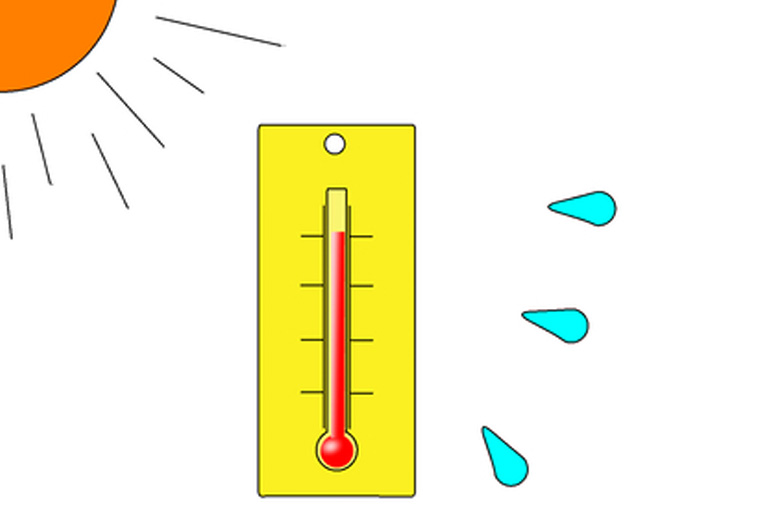As temperatures and humidity rise, the human body faces a life-threatening battle. Recent research has revealed that the danger points for illness and death due to extreme heat is lower than previously understood, prompting urgent concern amidst widespread heat waves exacerbated by climate change. Physiologists and medical experts explain that in such conditions, the body struggles to regulate its temperature, leading to heat exhaustion and potentially fatal heat stroke.
Sweating becomes ineffective in cooling the body sufficiently, causing dehydration, electrolyte imbalances, and the breakdown of vital organs as temperatures climb. This escalation in heat-related health risks underscores the critical need for proactive measures to mitigate the impact of heat waves on vulnerable populations globally. Extreme heat and high humidity can have deadly consequences on the human body. Here’s a detailed explanation of how heat can kill, and the physiological mechanisms involved:
Mechanisms of Heat-Related Death
Heatstroke:
- Mechanism: When the body’s core temperature rises significantly (104°F/40°C or higher), it can overwhelm the body’s thermoregulatory mechanisms.
- Effects: High core temperatures can cause proteins to denature, enzymes to malfunction, and cell membranes to become unstable, leading to organ failure.
- Symptoms: Symptoms include confusion, seizures, loss of consciousness, and hot, dry skin.
Increased Cardiovascular Load:
- Mechanism: To cool down, the body redirects blood flow to the skin, increasing the heart’s workload. This diverts blood from vital organs.
- Effects: The increased demand on the heart can lead to cardiovascular collapse, particularly in individuals with pre-existing heart conditions.
- Symptoms: Symptoms include chest pain, shortness of breath, rapid heartbeat, and fatigue.
Dehydration:
- Mechanism: Excessive sweating causes significant fluid and electrolyte loss, leading to dehydration. Severe dehydration reduces blood volume and stresses the kidneys.
- Effects: Dehydration can progress to hypovolemic shock, reducing blood flow to organs and causing them to fail.
- Symptoms: Symptoms include extreme thirst, dry mouth, dark urine, dizziness, fainting, and confusion.
Gut Leakage:
- Mechanism: High internal temperatures can compromise the integrity of the gastrointestinal tract, allowing toxins to leak into the bloodstream.
- Effects: These toxins can cause systemic inflammation and sepsis, which can be fatal if not treated promptly.
- Symptoms: Symptoms include abdominal pain, nausea, vomiting, and systemic inflammatory response.
Impact on the Brain
- Cognitive Dysfunction: Heat can impair brain function, leading to confusion, delirium, and cognitive impairment. The brain is highly sensitive to temperature changes.
- Symptoms: Early signs of cognitive dysfunction due to heat include difficulty thinking, confusion, and altered mental status. Severe cases can lead to loss of consciousness and seizures.
The Role of Humidity
- Humidity and Heat Index: High humidity impairs sweat evaporation, the body’s primary cooling mechanism. The heat index, which combines temperature and humidity, provides a more accurate measure of heat stress.
- Wet Bulb Globe Temperature (WBGT): This metric accounts for temperature, humidity, wind, and solar radiation. Critical WBGT thresholds are lower than previously thought: 87°F (30.5°C) for healthy individuals and 82°F (28°C) for older adults.
Vulnerable Populations
- Elderly: Older adults are more susceptible to heat due to reduced thermoregulatory capacity and often having pre-existing health conditions.
- Children: Children are at higher risk due to their higher metabolic rate and lower sweat rate compared to adults.
- People with Chronic Illnesses: Individuals with heart disease, diabetes, or respiratory conditions are more vulnerable to heat-related illnesses.
- Medications: Certain medications can impair the body’s ability to regulate temperature or increase susceptibility to dehydration.
Preventive Measures
- Hydration: Drinking plenty of fluids is crucial to prevent dehydration.
- Cool Environment: Staying in air-conditioned spaces, using fans, and taking cool showers can help lower body temperature.
- Avoid Strenuous Activity: Limiting physical exertion during peak heat hours reduces the risk of heat-related illnesses.
- Wear Appropriate Clothing: Light, loose-fitting, and breathable clothing can help keep the body cool.
- Monitor Vulnerable Individuals: Regularly check on the elderly, children, and those with chronic illnesses during heat waves.
Emergency Response to Heatstroke
- Immediate Cooling: Rapid cooling is essential for treating heatstroke. Cold water immersion is the most effective method.
- Emergency Interventions: In a medical setting, cool intravenous fluids, misting, ice packs, and cooling mats are used to lower body temperature.
- Recognition and Response: Early recognition of symptoms and prompt medical attention are critical to prevent fatal outcomes.
Conclusion
Rising temperatures and high humidity can lead to severe and often fatal health conditions if not managed properly. Understanding the mechanisms of heat-related illnesses and implementing preventive and emergency measures are crucial to mitigate the risks associated with extreme heat. Staying informed and prepared can save lives during heat waves and high-temperature events.
Disclaimer:
The information contained in this article is for educational and informational purposes only and is not intended as a health advice. We would ask you to consult a qualified professional or medical expert to gain additional knowledge before you choose to consume any product or perform any exercise.







